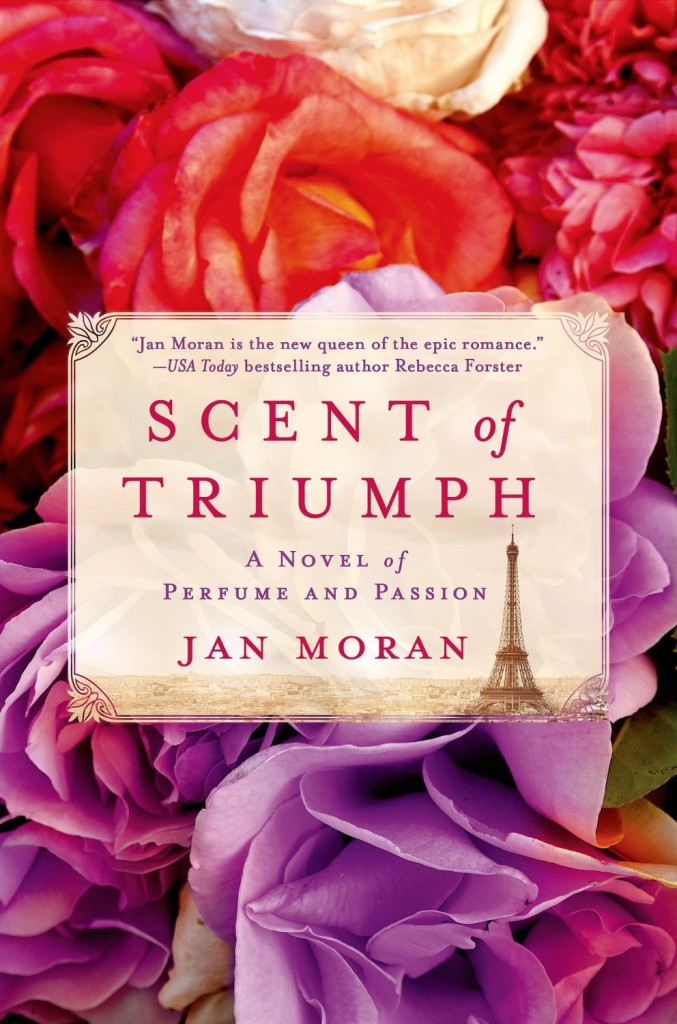Cotton Malone dove to the floor as bullets peppered the glass wall. Thankfully the transparent panel, which separated one space from another floor-to-ceiling, did not shatter. He risked a
look into the expansive secretarial area and spotted flashes of light through the semi- darkness, each burst emitted from the end of a short-barreled weapon.
The glass between him and the assailant was obviously extra-resistant, and he
silently thanked someone’s foresight.
His options were limited.
He knew little about the geography of the building’s eighth floor—
after all, this was his first visit. He’d come expecting to covertly observe a massive financial transaction—$20 million U.S. being stuffed into two large sacks destined for North Korea. Instead the exchange had turned into a bloodbath, four men dead in an office not far away, their killer—an
Asian man with short, dark hair and dressed as a security guard—now homing in on him.
He needed to take cover.
At least he was armed, toting his Magellan Billet–issued Beretta and two spare magazines. The ability to travel with a gun was one advantage
that came with again carrying a badge for the United States Justice De- partment. He’d agreed to the temporary assignment as a way to take his mind off things in Copenhagen, and to earn some money since nowa- days spy work paid
well.
Think.
He was outgunned, but not outsmarted.
Control what’s around you and you control the outcome.
He darted left down the corridor, across gritty terrazzo, just as an- other volley finally obliterated the glass wall. He passed a nook with a restroom door on either side and kept going. Farther on a maid’s cart sat unattended. He caught sight of a propped-open
door to a
nearby office and spied a uniformed woman cowering in the dark interior.
He whispered in Italian, “Crawl under the desk and stay quiet.” She did as he
commanded.
This civilian could be a problem. Collateral damage was the term used for them in Magellan Billet reports. He hated the description. More ac- curately they were somebody’s father, mother, brother, sister. Innocents, caught in the crossfire.
It would be only a few moments before the Asian appeared.
He noticed another
office door and rushed inside the dark space.
The usual furniture lay scattered. A second doorway led to an adjacent room, light spilling in through its half-open door. A quick glance inside that other space confirmed that the second room opened back to the hall.
That
would work.
His nostrils detected the odor of cleaning solution, an open metal canister holding several gallons resting a few feet away. He also spotted a pack of cigarettes and a lighter on the maid’s cart.
Control what’s around you.
He grabbed both, then tipped over the metal container.
Clear fluid gurgled onto the hall floor, spreading across the tile in a
river that flowed in the direction from which the Asian would come.
He waited.
Five seconds later his attacker, leading with the automatic rifle, peered around a corner, surely
wondering where his prey might be.
Malone lingered another few seconds so as to be seen. The rifle appeared.
He darted into the office. Bullets peppered the maid’s cart in deafening bursts. He flicked the lighter and ignited the cigarette pack. Paper, cellophane, and tobacco began to burn. One. Two. He tossed the burn- ing bundle out the door and into the clear film that sheathed the hall floor.
A swoosh and the cleaning liquid caught fire.
Movement in the second room confirmed what he’d thought would
happen. The Asian had taken refuge there from the burning floor. Be- fore his enemy could fully appreciate his dilemma Malone
plunged through the doorway, tackling the man to the ground.
The rifle clattered away.
His right hand clamped onto the man’s throat. But his opponent was strong.
And nimble.
They
rolled, twice, colliding with a desk.
He told himself to keep his grip. But the Asian pivoted off the floor
and catapulted him feetfirst into the air. His body hinged across his op- ponent’s head. He was thrust aside and the Asian sprang to his feet. He readied himself for a fight, but the “guard” fled the room.
He found his gun and approached the door, heart pounding, lungs
heaving. Remnants of the liquid still smoldered on the floor. The hall was clear and wet footprints led away. He followed them. At a corner, he stopped and glanced
around, seeing no one. He advanced toward the elevators
and studied the transom, noticing that the position-indicator displays for both cars were lit 8—this floor. He pressed the up button and jumped back ready to fire.
The doors opened.
The right car was empty. The left held a bloodied corpse, dressed only in his underwear. The real guard, he assumed. He stared at the con- torted face, obscured by two gaping wounds. Surely part of the plan was not only to eliminate all of the participants, but to leave no witnesses behind. He glanced inside the car and spotted a destroyed control panel.
He
checked the other car and found that it had also been disabled. The only way out now was the stairs.
He entered the stairwell and listened. Someone was climbing the ris- ers toward the roof. He vaulted up as fast as caution advised, keeping an eye ahead for trouble.
A door opened, then closed.
At the top he found an exit and heard the distinct churn of a helicop- ter turbine starting from the other side.
He cracked open the door.
A chopper faced away, tail boom and fin close, its cabin pointing out to the night. The rotors began to wind fast and the Asian quickly loaded on the two large sacks of cash, then jumped inside.
Blades spun faster and the skids lifted from the roof. He pushed open the door.
A chilly wind
buffeted him.
Should he fire? No. Let it fly away? He’d been sent only to observe,
but things had gone wrong, so now he needed to earn his keep. He stuffed the pistol into his back pocket, buttoned it shut, and ran. One leap and he grabbed hold of the rising skid.
The chopper powered out into the dark sky.
What a strange sensation, flying unprotected through the night. He clung tightly to the metal skid with both hands, the chopper’s airspeed
making it increasingly difficult to hang on.
He stared down.
They were headed east, away from the mainland, toward the water and the islands. The location where the murders had occurred was on the Italian shore, a few hundred yards inland, a nondescript office build- ing near Marco Polo International Airport. The lagoon itself was en- closed by thin strips of lighted coast joined in a wide arc to the mainland, Venice lying at the center.
The chopper banked right and increased speed.
He wrapped his right arm
around the skid for a better hold.
Ahead he spied Venice, its towers and spires lit to the night. Beyond on all sides was blackness, signaling open water. Farther east was Lido,
which fronted the Adriatic. His mind ticked off what lay below. To the north, ground lights betrayed the presence of Murano, then Burano and, farther on, Torcello. The islands lay embedded in the lagoon like spar- kling trinkets. He curled himself around the skid and for the first time stared up into the cabin.
The “guard” eyed him.
The chopper veered left, apparently to see if the unwanted passenger could be dislodged. His body flew out, then whipped back, but he held tight and stared up once more into icy eyes. He saw the Asian slide open the hatch with his left hand, the rifle in his right. In the instant before rounds rained down at the skids, he swung across the undercarriage to- ward the other skid and jerked himself over.
Bullets smacked the left skid, disappearing down through the dark.
He
was now safe on the right side, but his hands ached from gravity’s pull. The chopper again rocked back and forth, tapping his last bits of
strength. He hooked his left leg onto the skid, hugging the metal. The brisk air dried his throat, making breathing difficult. He worked hard to build up saliva and relieve the parching.
He needed to do something and fast.
He studied the whirling rotors, blades beating
the air, the staccato of
the turbine deafening. On the roof he’d hesitated, but now there ap- peared to be no choice. He held on tight with his legs and left arm, then reached back and unbuttoned his pant pocket. He stuffed in his right hand and removed the Beretta.
Only one way left
to force the chopper down.
He fired three shots into the screaming turbine just below the rotor’s hub.
The engine sputtered.
Flames poured out of the air intake and exhaust pipe. Airspeed di- minished.
The nose went up in an effort to stay airborne.
He glanced down.
They were still a thousand feet up but rapidly losing altitude in some- thing of a controlled descent.
He could see an island ahead of them. Scattered glows defined its rectangular shape just north of
Venice. He knew the place. Isola di San Michele. Nothing
there but a couple of churches and a huge cemetery where the dead had been buried since the time of Napoleon.
More sputtering.
A sudden backfire.
Thick smoke billowed from the exhaust, the scent of sulfur and burning oil sickening. The pilot was apparently trying to stabilize the descent, the craft
jerking up and down, its control planes working hard.
They
overtook the island flying close to the dome of its main church.
At twenty feet off the ground success seemed at hand. The chopper lev- eled, then hovered. Its turbine smoothed. Below was a dark spot, but he wondered how many stone markers might be waiting. Hard to see any- thing in the darkness. The chopper’s occupants surely knew they still
had company. So why land? Just head back up and ditch their passenger from the air.
He should
have shot the turbine a few times more. Now he had no choice.
So he
let go of the skid.
He seemed to fall for the longest time, though if memory served him right a free-falling object fell at the rate of thirty-two feet per second,
per second. Twenty feet equaled less than one second. He hoped that the ground was soft and he
avoided stone.
He pounded legs-first, his knees collapsing to absorb the shock, then rebounding, sending him rolling. His left thigh instantly ached. Some- how he managed to hold on to the gun. He came to a stop and looked back up. The pilot had regained full control. The helicopter pitched up and maneuvered closer. A swing to the right and his attacker now had a clear view below. He could probably limp off, but he saw no good ground cover. He was in the open, amid the graves. The Asian saw his
predicament, hovering less than
a hundred
feet away, the downwash
from the blades stirring up loose topsoil. The helicopter’s hatch slid open and his attacker one-handedly took aim with the automatic rifle.
Malone propped himself up and aimed the pistol using both hands. There couldn’t be more than four rounds left in the magazine.
Make ’em count.
So he
aimed at the engine.
The Asian gestured to the pilot for a retreat.
But not before Malone fired. One, two, three, four shots.
Hard to tell which bullet actually did the trick, but the turbine ex- ploded, a brilliant fireball lighting the sky, flaming chunks cascading to the ground in a searing shower fifty yards away. In the sudden light he spotted hundreds of grave markers in tightly packed
rows. He hugged the earth and shielded his head as the explosions continued, a heaping mass of twisted metal, flesh, and burning fuel erupting before him.
He stared at the carnage.
A crackle of flames consumed the helicopter, its occupants, and $20 million U.S. in cash.
Somebody was going to be pissed.


















